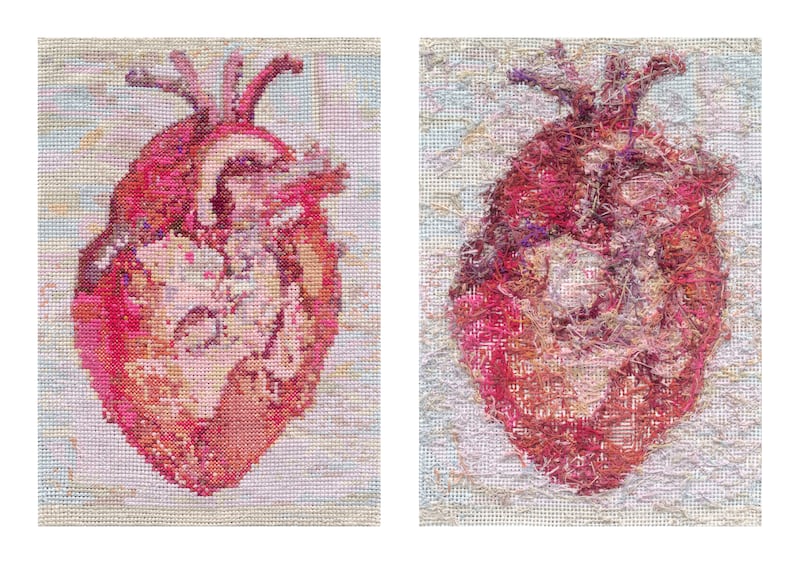Showcasing women’s membership of the Royal Hibernian Academy (RHA) is a new exhibition, It took a Century: Women Artists and the RHA, which will run at the National Gallery of Ireland until October.
True to its title, the free exhibition showcases women’s membership to the academy from the election of its first woman member, Sarah Purser in 1923, to the first woman president, Dr Abigail O’Brien in 2018. Part of a year-long programme to mark the 200th birthday of the RHA, it refers to the 100 years that passed before the institution elected a woman member – Sarah Purser, and a further century before Dr O’Brien became the first woman president.
Describing itself as “Ireland’s powerhouse of the arts”, the RHA is run by eminent artists and architects, who are elected in recognition of their work by their peers. Though funding was originally underwritten by the English monarch, today the institution is an Irish charity.
It was founded in 1823 and two of its earliest presidents were celebrated architect Francis Johnston, best known for the General Post Office on O’Connell Street in Dublin, and William Ashford, considered to be the foremost landscape painter of his time. Two of Ashford’s very early works depicting scenes of Dublin Bay, which had lost their attribution and through pure luck managed to stay together for 150 years, achieved €460,000 through Adam’s in June 2022.
Appealing a decision on the cost of UK national insurance
‘We’ve prosecuted much weaker cases than McGregor’: How the DPP decides what cases go to court
How the two-income mortgage marked a turning point in Irish family life
Translated fiction reviews: the best of China’s incredibly deep storytelling tradition

Though women were accepted to the RHA as honorary members since the late 19th century, it wasn’t until after 1919 that women were considered as associates and full member artists. This follows 1918, which was the first time Irish women were permitted by law to vote and stand in parliamentary elections. It was also the year in which the first woman was elected to the British parliament at Westminster. Countess Constance de Markievicz, who represented a Dublin constituency, never took her seat in Westminster, opting instead to join the revolutionary First Dáil, where she became the first woman TD.
Sarah Purser and Mary Swanzy were both subsequently added to the candidate list as RHA members. Painter/stained-glass artist Purser was duly elected ARHA in 1923, and she became a full academician by 1924. She was given honorary academician (HRHA) status – a recognition only given to women – in 1890, with what the Academy termed “slender privileges”. This was even though she had exhibited more portrait commissions than any other artist at the Academy between 1887 and 1890.
At the time, there was much dissent to women becoming members, with Irish poet and modernist Thomas McGreevy asking how it might be perceived on the world stage by the institution’s exclusion of women: “It will think it is because the women are better artists than themselves.”
The exhibition celebrates RHA women of the past along with its current women members, and it has now achieved equitable representation in its membership. “It is also an admonishment to the male establishment that excluded women for so long – to be precise, a century” says Dr O’Brien.
Works in a variety of media are represented by artists – half of whom are living – and the other span the decades from the 1920s. nationalgallery.ie
Cork’s call
Cork city Council is asking artists to submit proposals for a new, large scale artwork that will be projected on to Triskel Christchurch on South Main Street – a wonderfully restored 1700s neoclassical Georgian church, which is part of the Triskel Arts Centre. It will be one of a series of five new works that form Island City, Cork’s Urban Sculpture Trail. With a budget up to a maximum of €40,000 (projection equipment will be provided by Cork County Council) for the successful artist, the artwork will be projected each evening from dusk for about eight months a year for up to five years – the duration of the city’s sculpture trail. corkcity.ie
Sales highlights
Whyte’s Summer Online Auction, which ends tomorrow, has a good array of accessible art, including works by prominent artists including Robert Ballagh, Markey Robinson and Pauline Bewick. Robinson is featured in the first two lots: Interior, Still Life, and Street Scene is a set of three works framed together (€700-€1,000); and Cottage by a Lake, with Oisín Arts label verso (€600-€800). Fans of John Kingerlee, the west Cork based artist who was described by William Zimmer, a New York Times art critic of 25 years, as having a ‘superlative talent’, have a choice of ten works ranging in size, medium and price from €200-€300, up to €1,000-€1,500 for his larger oils. Overall, there are more than 330 works to choose from, including Mayo, a watercolour, by Irish artist Norah McGuinness (€2,500-€3,500). McGuinness was elected an honorary member of the RHA in 1957, but later resigned. whytes.ie














